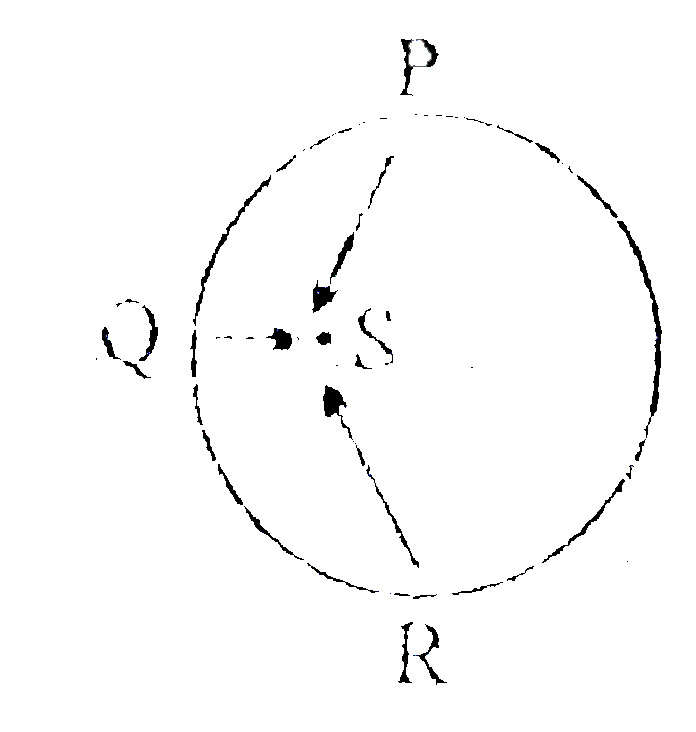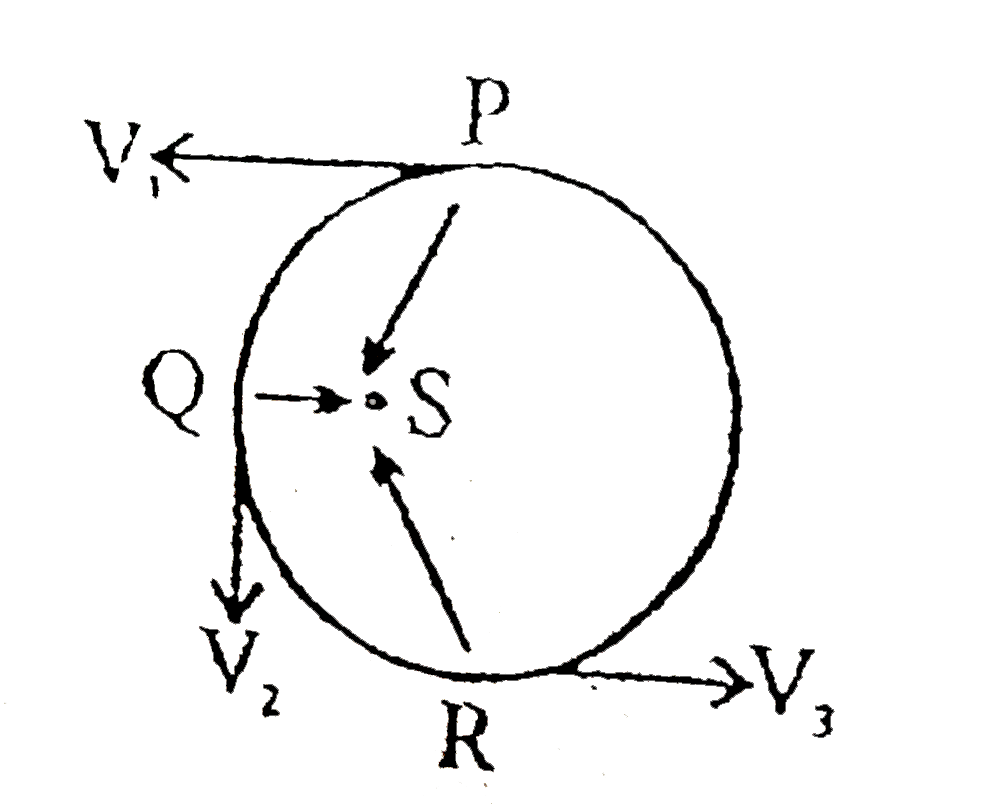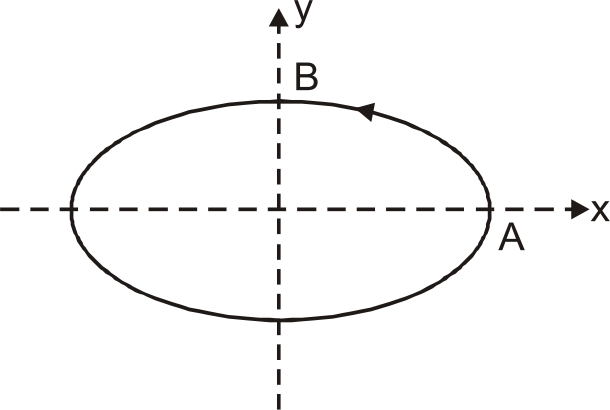An object moves counter−clockwise along the circular path shown below. As it moves along the path its acceleration vector continuously points towards point S. The object

speeds up at P,Q and R
shows down at P,Q and R
speeds up at P and shown down R
shows down at P and speeds up at R
The correct Answer is:C

→a.→v=(+) at P (speeds up)
→a.→v=(−) at R (speeds down)
→a.→v=(−) Zero at Q (at=0)
Topper's Solved these Questions
- TEST PAPERBook:ALLENChapter:TEST PAPERExercise:PHYSICS
Explore 4 Videos
- TEST PAPERBook:ALLENChapter:TEST PAPERExercise:PHYSICS
Explore 4 Videos
- SIMPLE HARMONIC MOTIONBook:ALLENChapter:SIMPLE HARMONIC MOTIONExercise:Example
Explore 1 Video
- TEST PAPER 1Book:ALLENChapter:TEST PAPER 1Exercise:PHYSICS
Explore 11 Videos
Similar Questions
Knowledge Check
A body moving along a circular path has
Aa constant speedBa constant velocityCno tangential velocityDno radial accelerationA body moving along a circular path has
Aa constant speedBa constant velocityCno tangential velocityDno radial acceleration.A particle is moving on a circular path with constant speed, then its acceleration will be
AZeroBExternal radial accelerationCInternal radial accelerationDConstant acceleration
If a body moves along circular path of constant radius, then the magnitude of its acceleration will be
View SolutionAn object moves in a circular path with a constant speed. Which one of the following statements is correct?
View SolutionA point p moves in counter - clockwise direction on a circular path as shown in the figure . The movement of 'p' is such that it sweeps out in the figure . The movement of 'p' is such that it sweeps out a length s=t3+5 , where s is in metres and t is in seconds . The radius of the path is 20m . The acceleration of 'P' when t=2s is nearly .

View SolutionA particle is moving along an elliptical path with constant speed. As it moves from A to B, magnitude of its acceleration :

View SolutionAn object moving in a circular path at constant speed has constant
View Solution

